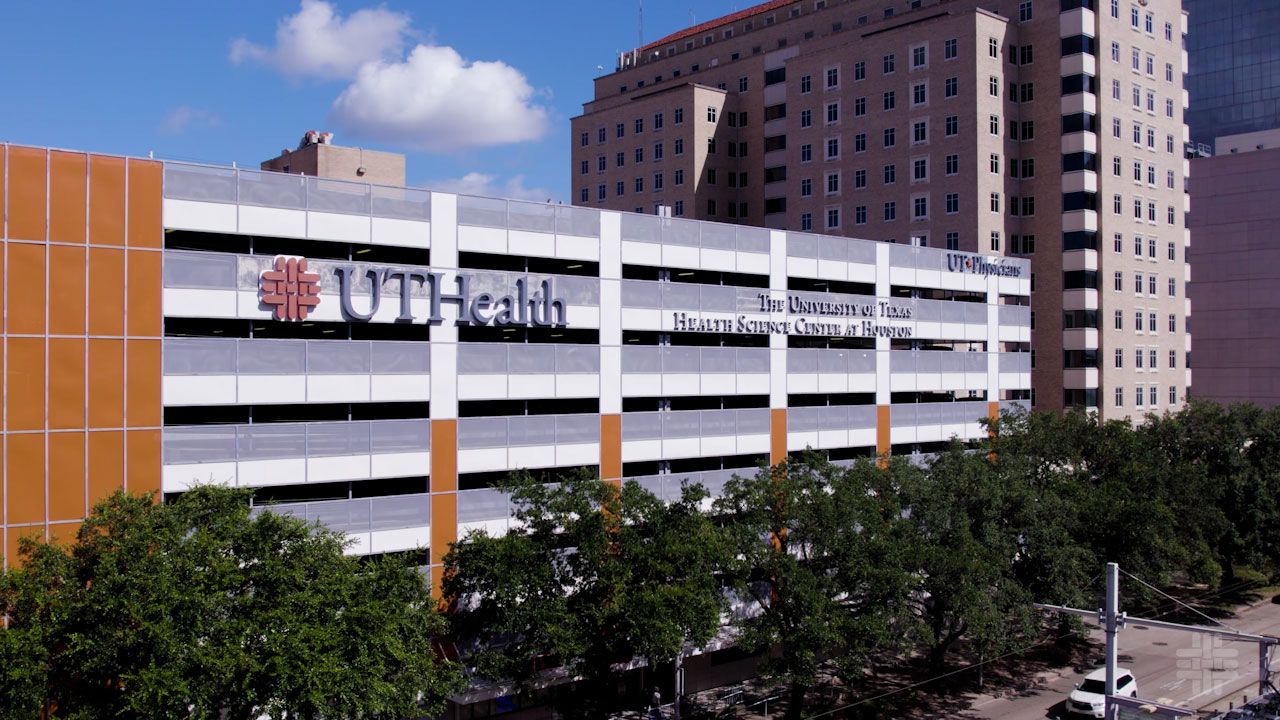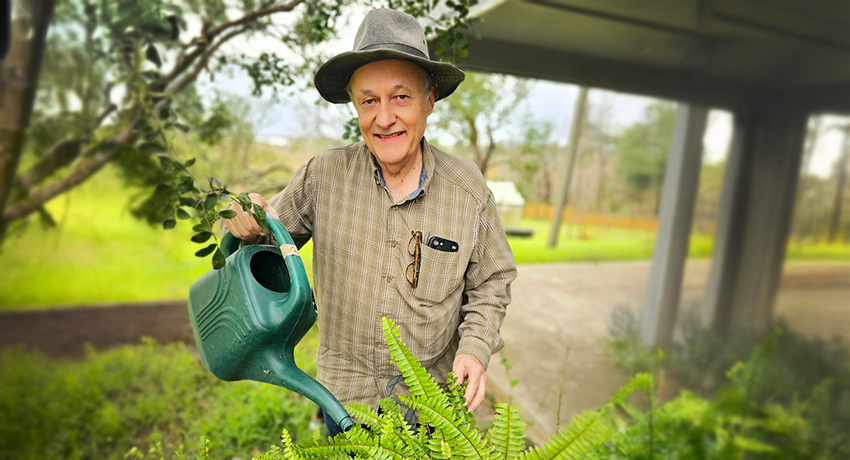As a retired school superintendent, Larry Nichols discovered a passion for gardening, earning his Master Gardener certification through the Texas A&M AgriLife Extension Service. But his newfound hobby, which entails volunteering for hours at a time, might not have taken root and flourished had he not been treated for an enlarged prostate.
Quality of life impacts
In 2018, Larry noticed a change in how often he had to use the restroom and how difficult it was to empty his bladder.
“I would be at school board meetings that last 60-90 minutes, and I’d have to be judicious about using the restroom right before and right after,” said Larry. “There were times when I felt like I might urinate on myself. I’d rush to the restroom, but very little would come out. I’d also have to get up to use the bathroom three or four times a night, every night. It was frustrating.”
The symptoms were physically and socially debilitating. He couldn’t take long car rides, sit through lengthy meetings, or sleep through the night.

He was on the highest dosage of available medicine when he was referred to Rodrigo Donalisio da Silva, MD, a urologist with the Endourology and Kidney Stone Program at UT Physicians.
Enlarged prostate diagnosis
Larry was diagnosed with benign prostatic hyperplasia (BPH), also known as an enlarged prostate.
“Think of the prostate as a doughnut,” said Donalisio da Silva, an associate professor with the Department of Surgery, Division of Urology with McGovern Medical School at UTHealth Houston. “The bladder sits above the prostate, and the urethra, the channel that empties the bladder, runs through the doughnut hole. If the prostate is enlarged, it squeezes the urethra and obstructs urinary flow.”
Symptoms of BPH include a weak urine stream, inability to empty the bladder, frequent trips to use the restroom, and urge incontinence.
“Urge incontinence happens when your bladder is trying to overcome the obstruction. The increase in pressure means you leak urine before you’re able to get to a restroom,” said Donalisio da Silva.
An enlarged prostate is common as men age. If the prostate grows too large, however, it can become uncomfortable and dangerous.
Left untreated, benign prostatic hyperplasia could lead to bladder stones, blood in the urine, kidney infections, and bladder failure, which is irreversible.
Minimally invasive surgery for benign prostatic hyperplasia
Larry underwent a minimally invasive procedure called holmium laser enucleation of the prostate (HoLEP) in 2024.
“Without making any incisions, we use a laser to precisely remove the portion of the prostate that is causing the obstruction,” explained Donalisio da Silva.
HoLEP surgery can last two to three hours. Patients will typically spend one night in the hospital for observation, and because there are no incisions, they are usually discharged within 24 hours of the procedure.
The chance of needing a repeat procedure is less than 3% over 20 years.
“Most men think urinary issues are part of aging and there’s nothing they can do,” said Donalisio da Silva. “They can get this treatment early on and retain quality of life.”
Recovery
“The HoLEP procedure is safer, faster, and provides an earlier recovery than other forms of prostate surgery,” said Donalisio da Silva.
Most patients can return to their normal routines the next day, with the exception of exercising or lifting heavy objects. These tasks are prohibited for the first month.
Resuming life
“Before this surgery, I almost always felt like I needed to use the restroom,” said Larry. “Now, using the restroom is quick and easy. I’m not living with that constant urge.”
Larry’s quality of life has rebounded with gusto. His daily activities, social life, volunteer work, and sleeping are no longer curtailed by frequent restroom breaks.
“Dr. Donalisio is patient-centered,” said Larry. “He takes time explaining the process carefully, has a great bedside manner, and did an excellent job. I encourage people with a similar diagnosis to consider this surgery. It was life-changing.”


